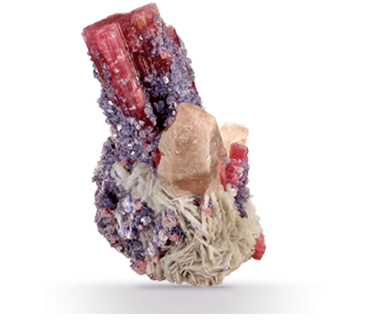open 10 am - 7 pm
laboratory is closed
Tourmaline
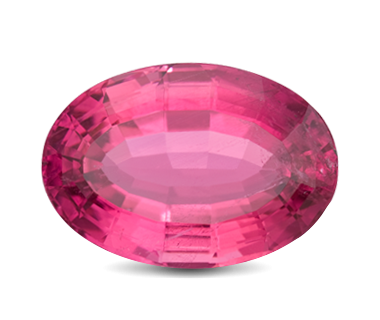
Tourmaline is a crystalline boron silicate mineral compounded with elements such as the silicon-oxygen tetrahedra in the structure of the crystal lattice. The origin of the name of the mineral has several interpretations. According to the Sinhalese the name "turamali" means "a stone of different colors". The name "Tourmaline" war recorded in the book "Curious speculations in sleepless nights" (Curiöse Speculationes bey Schlaflosen Nächten) by Johann Georg Schmidt published in 1707 in Europe. Tourmaline is mentioned as a stone brought back in 1703 by the Dutch from the island of Ceylon. There was a name "schorl" until the end of the XIX century in Russia. Commonly encountered two of three species and varieties that are used in the manufacture of jewelry inserts - a group of alkaline tourmalines and a group of calcium tourmalines. Alkaline tourmaline include such minerals as: schorl (and species), dravite (and species), tsilayzit, elbaite and others (without gemmological practice). Calcium tourmalines include such minerals as: scythed (and species), fluoride-liddicoatite and others (without gemmological practice).
Chemistry:
XY3Z6(T6O18)(BO3)3V3W (all tourmalines general formula);
where:
X = Na+ and/or Ca2+, and/or K+, and/or vacancy;
Y = Fe2+ and/or Mg2+, and/or Mn2+, and/or Al3+, and/or Li+, and/or Fe3+, and/or Cr3+;
Z = Al3+ and/or Fe3+, and/or Mg2+, and/or Cr3+;
T = Si4+ and/or Al3+, and/or B3+;
О = О2-;
B = B3+;
V = OH- and/or O2-;
W = OH- and/or F-, O2-.
Crystal system: Trigonal, diagonal-dipyramidal crystal class (point symmetry group);
Color: Pink, red, orange, yellow, green, blue, blue, purple, brown, black, polychrome, and colorless. Schorls have very dark colors, the predominant of which is black. Dravites are colored in dark tones that are not so intensive, very rarely having a deep dark color. Tsilaisite has not been found in its nature form, but there are known elbaite-dravite tourmaline with a high content of tsilaisitic minal. Elbaites have a variety of colors caused by different chromophores and their combination: Fe2+, Fe3+, Mn2+, Mn3+, Cr3+, V3+, Cu etc. Yellow and yellowish orange tourmalines that are elbaite and dravite with the cylaisite molecule, have bright yellow color, caused by the high concentrations of Mn2+ ions, in combination with a pair of Mn2+–Ti4+. The admixture of Mn3+ in tourmalines define the orange tint, and the presence of the Fe2+ ion paired with Ti4+ is green. The red color of tourmalines depends on the presence and magnitude of the concentration of Mn3+ ions, and the blue color of tourmaline type "paraiba" - from Cu2+.
Identification properties
| Physical properties | |
|---|---|
| Mohs hardness: | 7 |
| Density: | 2.82 – 3,32 g/cm3 |
| Cleavage: | imperfect |
| Fracture: | conchoidal |
| Optical properties | |
|---|---|
| Optical character: | anisotropic, uniaxial *, negative |
| Refractive Index: | no =1.635 – 1.668 (до 1.675), ne =1.610 – 1.650 |
| Birefringence: | 0.014 – 0.032 |
| Pleochroism: | weak to distinct |
| Dispertion: | 0.017 (BG) |
| Luster: | vitreous |
* Sometimes anomalously biaxial.
Inclusions and structural inhomogeneities
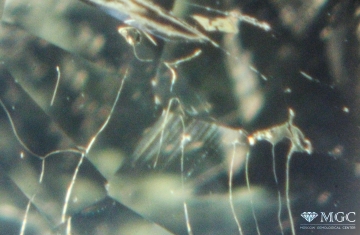
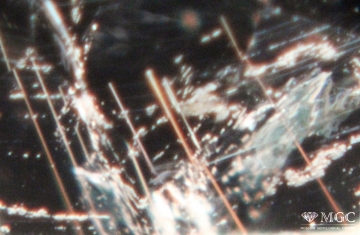
Gem basic treatments
| Treatment | Goal |
|---|---|
| Heat treatment | Altering the gem visual color, enhancing the color or removing the unwanted hue |
| Irradiation treatment with heat treatment followed | Altering and enhancing the gem visual color |
| Diffusion treatment | Altering the gem visual color |
| Healing of fractures (cracks) or impregnation with polymer compounds with a refractive index close to tourmaline to fill the open cavities (oil, wax, polymer) | Improving the apparent clarity of gem material |
| Surface coating by applying a various coloring agent | Altering the gem visual color |
Inclusions and structural inhomogeneities
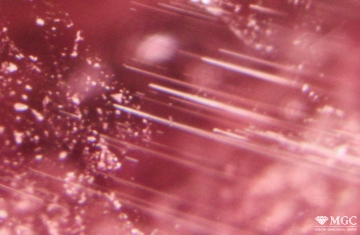
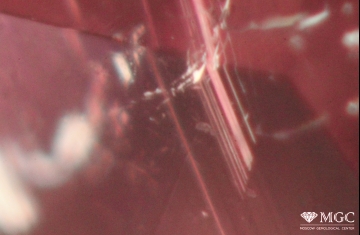
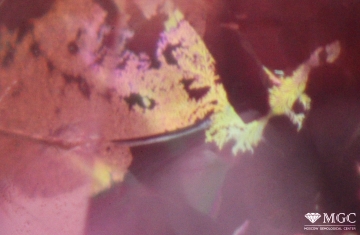
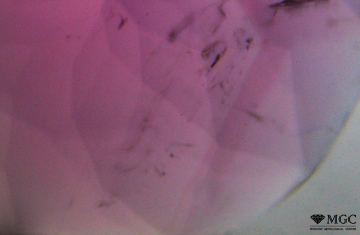
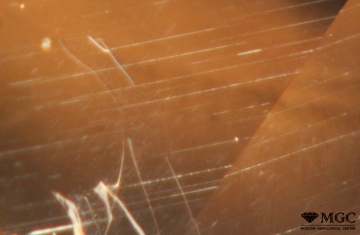
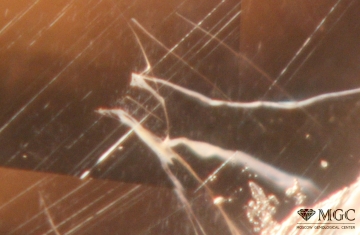
Synthetic or Imitation gem materials
Synthetic tourmaline for industrial purposes is produced in a limited quantity mainly by "hydrothermal" synthesis technique based on the temperature gradient principle. Some of these stones can enter the jewelry market.
The most commonly encountered synthetic tourmaline is as follows:
- synthetic minerals with a similar color (fianit, spinel, garnet, corundum);
- doublets: tourmaline + quartz, tourmaline + glass;
- color glass.


